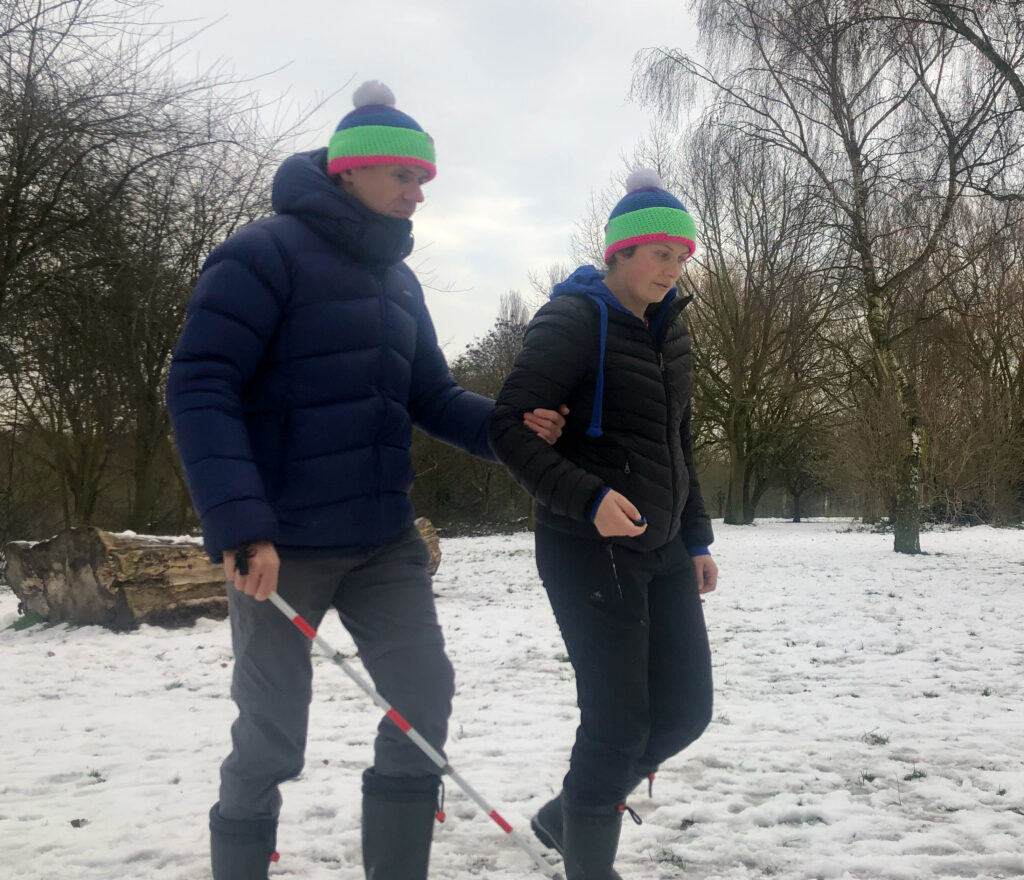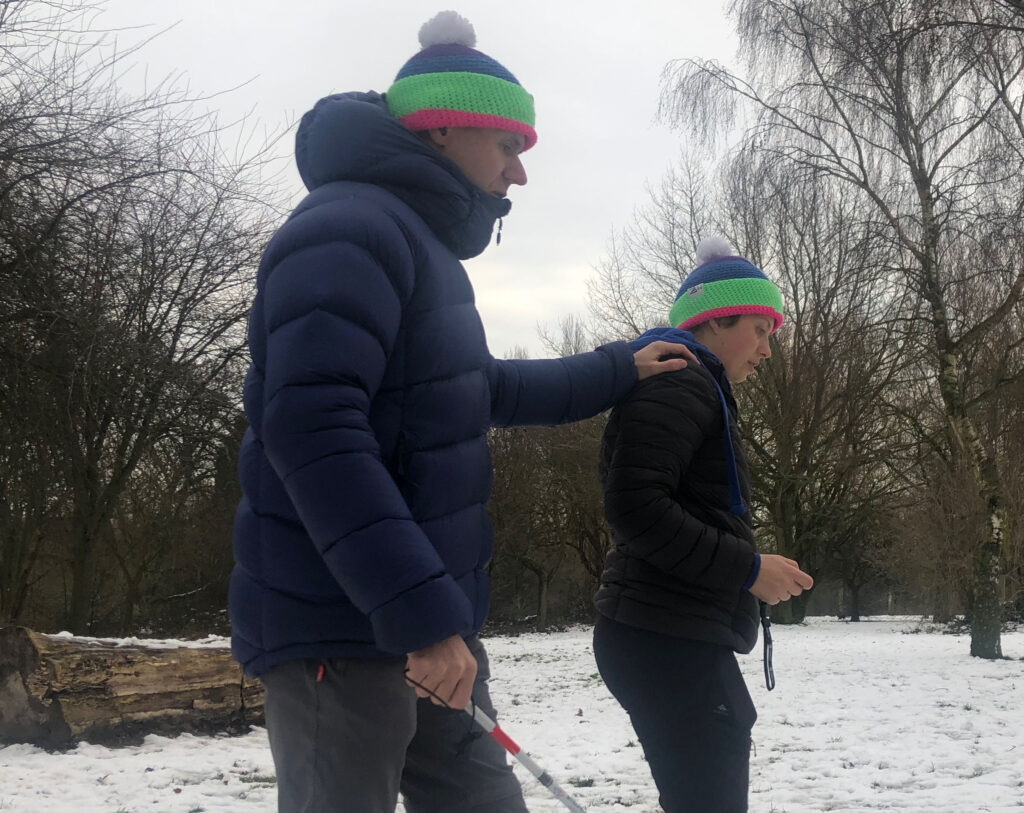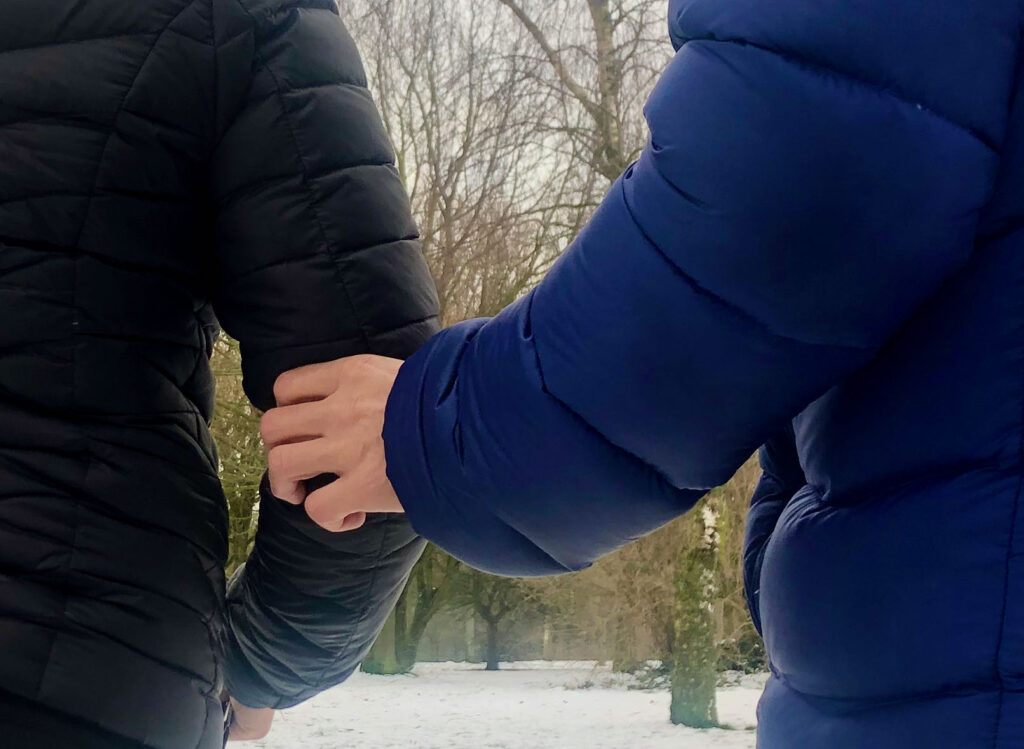When a visually impaired person gets to a climbing facility they may need some support to get around. Cane and guide dogs are a great help, but they can’t tell you where to go.
Contents:
Introductions
Whenever you meet a blind or visually impaired person it’s a good idea to introduce yourself by name. John has had countless conversations with people and has walked away having no idea who he has been talking to. Introducing yourself by name will avoid any awkward situations on both parts. It always seems weird doing it at first, but it really makes a difference to blind/visually impaired people who will only find it useful.
When it comes to guiding the first thing to do is ask the person if they need any assistance. If the answer is yes, ask them how they would prefer to be guided, where they would like to go and let them take your arm rather than you grabbing their’s. Many blind/visually impaired people will be able to explain quite clearly how they would prefer to be guided but we will explain some of the common techniques here too.
People may also prefer to move around independently with or without a cane or guide dog. You can help in this situation by describing surroundings, layout or by providing verbal instructions. Don’t forget pointing isn’t very useful to a blind person. Any directions should be given to the person and not a guide dog. There’s also a running joke in the blind community about the mythical land of ‘over there’! Don’t worry about occasional slip ups or using the words ‘see’ or ‘look’. You don’t need to change the words you would usually say. Nobody will be expecting perfection and your help will be appreciated.
Guiding
Officially there are 3 ways of guiding: a gentle pinch of the elbow, linking arms and a hand on the shoulder. There is no set side for this and it’s down to the personal preference of the VIP (visually impaired person). The preferred arm may change if they are walking an off duty guide dog alongside them.

Linking arms 
Hand on shoulder 
The gentle elbow pinch
As you move around you should aim to be half a step ahead of the VIP making sure to give information on the surroundings, layout and any obstacles that need attention. Without any explanation of surroundings a blind person may not know where they are or what’s around them. If you can, try to give a description of what’s around you and any points of interest. With time, the person may learn the layout and get around with more independence.
Pay careful attention to overhead obstacles especially if you are shorter than the person you are guiding. John has had many occasions where the person guiding him has said ‘well I fitted under it’. John prefers to link arms when being guided. This does make staying half a step a little more tricky to pointing out any obstacles or kerbs is especially important.
When it comes to stairs let the person know where the handrail is, whether the stairs go up or down and when they are approaching the last step. With doors, it’s a good idea to let the person know if they need to hold the door open and if so, on which side. For kerbs or boulder mats it’s also useful to let the person know if the step is up or down and if it’s particularly high or low.
As time goes on, as a team, you will most likely get used to working together. This is only a guide and having a chat is always the best place to start.
